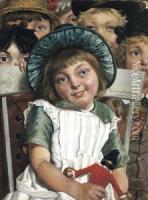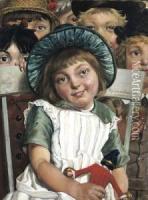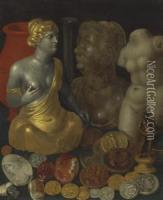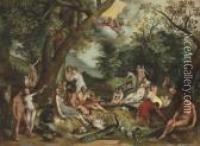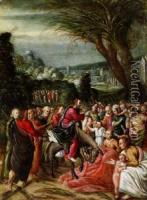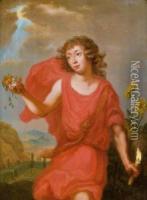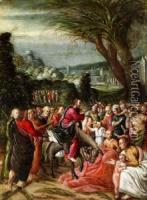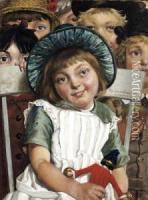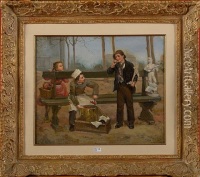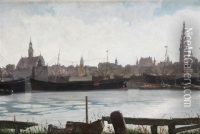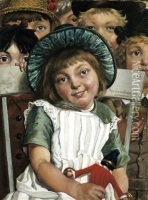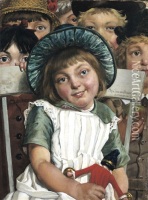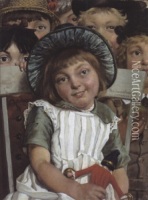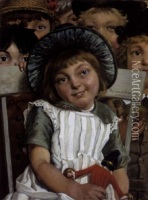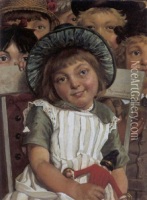Hendrik Van Der Borcht Paintings
Hendrik van der Borcht the Elder was a Flemish painter, etcher, and draftsman known for his contributions to the world of art during the late 16th and early 17th centuries. Born in Brussels in 1583, he was part of a period that was rich in cultural and artistic evolution, marking the transition from the Renaissance to the Baroque. His work, however, is less documented than that of his contemporaries, making him a somewhat enigmatic figure in art history.
Van der Borcht's early life is shrouded in mystery, but it is believed that he received his artistic training in the vibrant artistic environment of the Southern Netherlands. Like many artists of his time, he may have traveled extensively, which would have exposed him to a variety of artistic styles and techniques. His work exhibits a keen attention to detail and a fascination with the natural world, traits that were highly valued in the art of his time.
Although primarily known for his engravings and etchings, van der Borcht also painted, though few of his paintings have survived or been definitively attributed to him. His engravings, on the other hand, have been better preserved and provide a clearer view of his artistic talents. These works often featured landscapes, religious themes, and scenes from daily life, showcasing his versatility and skill in capturing both the mundane and the sublime.
In addition to his work as an artist, Hendrik van der Borcht the Elder played a significant role in the art world as a teacher and mentor. He was involved in the artistic community in Frankfurt, where he moved later in life. His influence extended to his family, with his son Hendrik van der Borcht the Younger also becoming a noted artist. This familial continuation of artistic talent underscores the importance of mentorship and lineage in the art world of the time.
Van der Borcht's contributions to art were recognized in his time, but his legacy has been somewhat overshadowed by the more famous artists of his era. Despite this, his work remains an important part of the study of Flemish art, providing insight into the techniques, themes, and aesthetic values of his time. Hendrik van der Borcht the Elder passed away in 1660, leaving behind a body of work that, while not as well-known as some of his contemporaries', offers a fascinating glimpse into the artistic endeavors of the late Renaissance and early Baroque periods.
